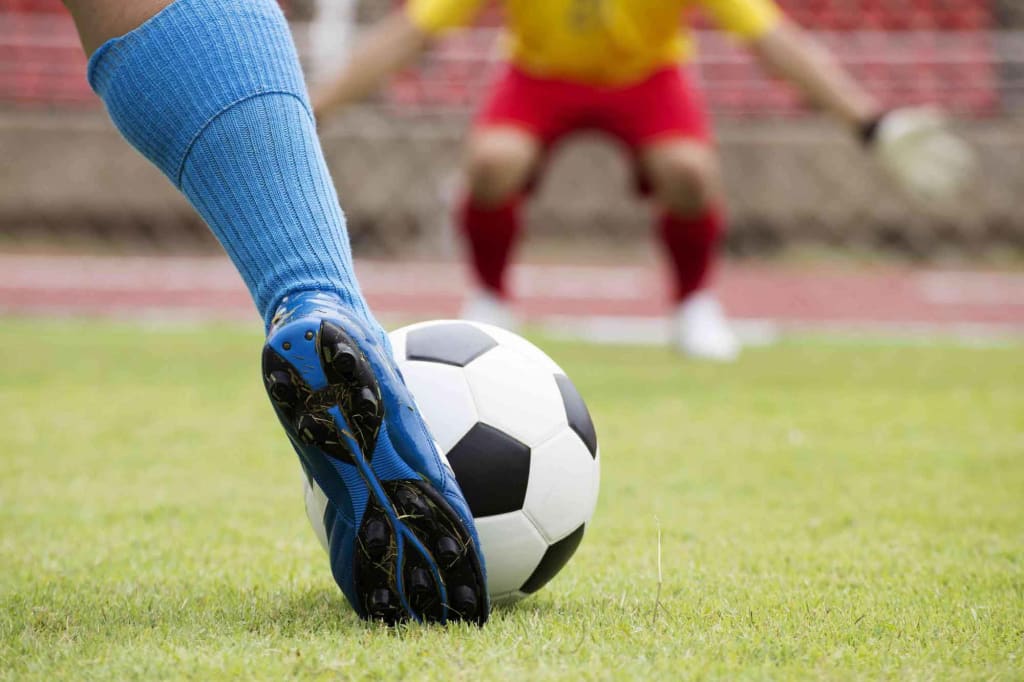The Ultimate Soccer Ball Guide
A soccer ball guide may seem unnecessary, but with the many types of soccer balls out there, knowing what they're for and how they're different from each other can dramatically change your game.

Believe it or not, there are a lot of different kinds of soccer balls out there. Some soccer balls are designed for street or urban settings, while others are best on an indoor turf field. Some balls have more or less air retention, or differ between latex bladders and butyl bladders. That's why soccer ball guides are so important for your gamplay. In order to cover the basics of all the different types of ball, from when and where they're used to how they're made, you need to be informed so that you can choose which ball will work best for you.
One kind of training ball that differs greatly from the kind of ball you'd play a regular game with is the skill or mini ball. These balls tend to be similar to other major balls you'd find on this soccer ball guide, but much smaller. When you're choosing the best soccer ball for a small child or for fine-motion practice, you want to get a ball that matches the quality and materials of a standard ball, just on a smaller scale. This means you should look for PU balls made from high quality synthetic leather, and are designed to capture all the feel and sensitivity of a regular match ball. This allows you to practice realistically, but with more fine-tuned motion training and an easier time for small players.
Beach balls are designed a little differently than your standard turf training or match ball. Rather than being fortified for rough surfaces, these balls are designed to be more gentle on your feet, so you can play barefoot without breaking or bruising any toes. The best choices for beach soccer balls are designed with an ultra-soft cover and TPE foam, which are more gentle on your feet, and help give your ball more longevity by being better able to absorb impact. These are a great, relatively inexpensive option for playing around at the beach, and practicing under different conditions, which can greatly improve your game and skills overall (especially considering that they make for the best soccer balls for juggling, too).
Like beach balls, street balls are a standard sized soccer ball, but are designed a little differently and often use different materials to be better adapted to playing on uneven or rough surfaces, like concrete, dirt, or gravel. Soccer ball guides for choosing the best soccer ball for street playing will direct you to look for a specially designed, strengthened TPU cover that won't be punctured by sharp or small objects on the playing field (or street, or driveway, or wherever you'd like to play). These balls have more longevity than standard match balls, allowing you to hone your skills in less curated spaces, and take your training and practice on the road—literally.
The biggest difference between futsal balls or indoor balls and regular training/match balls is in their bounce. Generally, futsal balls are slightly smaller than standard, with a lower bounce ability, so that they are more conducive to indoor play on hard surfaces. In an indoor field, standard soccer balls will fly all over the place, but these slightly smaller, lower-bounce alternatives compensate for the smaller size of the field, the existence of walls, and the hard surface on which outdoor balls would bounce willy-nilly. They are also generally slightly more fortified, protecting them from the rougher conditions of playing on hard surfaces compared to grass or turf.
Though this ball could be considered 'standard' in many ways, a training ball differs in some regards. Training balls generally follow standard regulations for size, weight, and inflation. The real differences between these balls and match balls are more or less what you might expect: Training balls, being for training, are somewhat more durable, expected to last more than just one game without needing repairs or replacements. The best soccer balls for training are also often designed to be a bit more versatile on various field types, so you can use them in a range of practice locations.
Okay, all right, I know. This ball that soccer players might use isn't really a soccer ball at all, nor is it designed exclusively for soccer players. However, a soccer ball sized medicine ball is a fantastic training tool for players of all kinds, especially for goalkeepers, to practice ball control, ball play, and strengthening exercises. Many players like to practice various arm, leg, and core strengthening exercises, as well as figuring out any way possible to figure out how to improve ball control, with soccer ball sized medicine balls of varying weights.
Of course, these aren't the kinds of soccer balls that you'd want to kick around on the field, weighing far more than your standard ball, but they're still a valuable tool for every player to keep in their repertoire.
Like street balls and futsal balls, turf balls are designed with a little extra fortification to withstand a playing surface that can be a bit harsher on the ball—specifically, as the name would suggest, turf. These balls are one of the most recent to be included in soccer ball guides, as artificial turf and grass are comparatively recent developments in regular soccer play. Unlike futsal and indoor balls, however, turf balls are usually a standard size 5 ball; though may of course be smaller for younger players or amateur games.
The ball against which we tend to measure other types of soccer balls is the standard match ball. These are the perfect balls for, well, matches. They often sacrifice longevity for short-term quality, in contrast to training balls, which are designed for frequent re-use. A normal, NCAA approved adult match ball is generally between 27 and 28 inches in circumference, and 14 to 16 ounces. The cover must be leather or approved synthetic leather, and the pressure should be between 8.5 and 15.6 psi. These regulations allow for a fair playing field in matches of all kinds; and as a result, are often used in casual games and matches as well.
Premium match balls are really just match balls, except that they're also FIFA approved. Getting FIFA approval requires a whole lot of rigorous testing to ensure that all the soccer balls are of similar high quality and feel, ensuring that no team or player will have an advantage based on any of the variable factors when it comes to the ball in play. This regulates everything from pressure and inflation to shape to bounce to water retention or resistance. Most major leagues require premium match balls to be used for any official game—an official ball for every official match.
An item often not found on soccer ball guides are promo balls or promotional balls. Any of the aforementioned types of soccer ball could be a promo ball, as well, by design. All this really means is that the ball cover is designed with a logo of some kind, advertising a company, event, or league. Any company or individual can actually pay to have a custom promo ball made for them, and many companies use this as an opportunity to advertise themselves or to show their support for a league, team, or even individual.
About the Creator
Connor Brighton
Love sports and travel! Fan of almost every major sport and a soon to be world-renowned traveler (mostly interested in the food and drink of other cultures!)







Comments
There are no comments for this story
Be the first to respond and start the conversation.